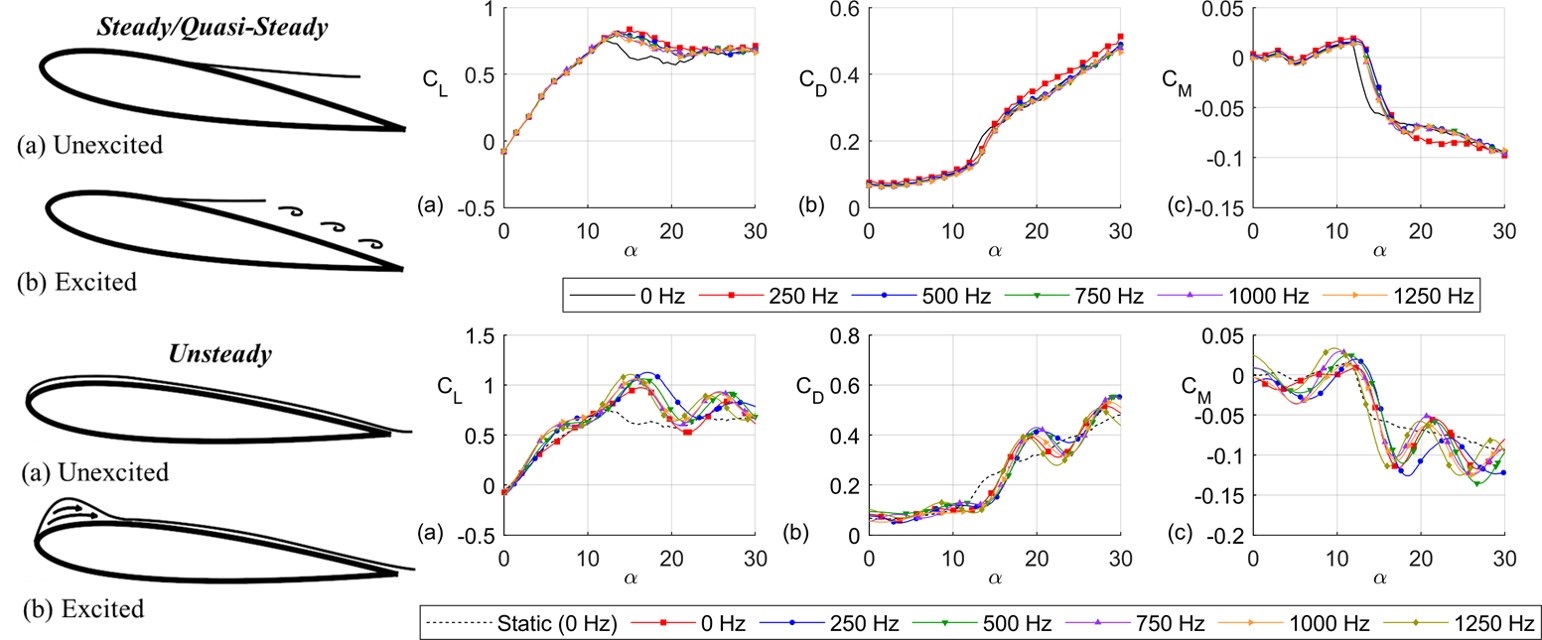
Unsteady Aerodynamic Flow Control via Acoustic Excitation

Aerodynamic flow control using internal acoustic excitation holds promise as it combines the simplicity of passive flow control techniques (in terms of added weight and operational complexity) with the control authority of active flow control methods. The current research effort fundamentally analyzes the effects of internal acoustic excitation on steady and unsteady wing aerodynamics. Experimental efforts have shown that applying acoustic excitation in steady and quasi-steady flows led to increased aerodynamic efficiencies and moment characteristics pre- and post-stall only when there was trailing-edge separation due to the amplification of instabilities in the separated shear layer. Acoustic excitation in dynamic stall motions led to an outward motion of the shear layer at the leading edge moving, leading to higher flow curvature, increased lift, decreased moment, and negligible change to drag. Additionally, acoustic excitation was seen to increase the strength of the leading-edge vortex at lower Reynolds numbers.
Publications:
- Kiley, J., White, M., and Narsipur, S. (2024) "Unsteady Aerodynamic Flow Control at Low Reynolds Numbers via Internal Acoustic Excitation," Physics of Fluids, Vol. 36, 094120. | doi: 10.1063/5.0226647
- Kiley, J., White, M., and Narsipur, S. (2024) "Internal Acoustic Excitation for Control of Boundary Layer Transition," Proc. of the 2024 AIAA Aviation Forum, AIAA Paper 2024-3759. | doi: 10.2514/6.2024-3759
Funding Support:


